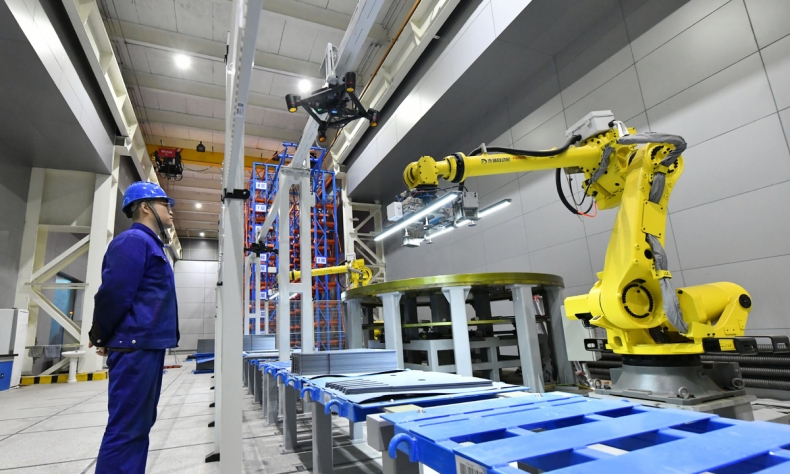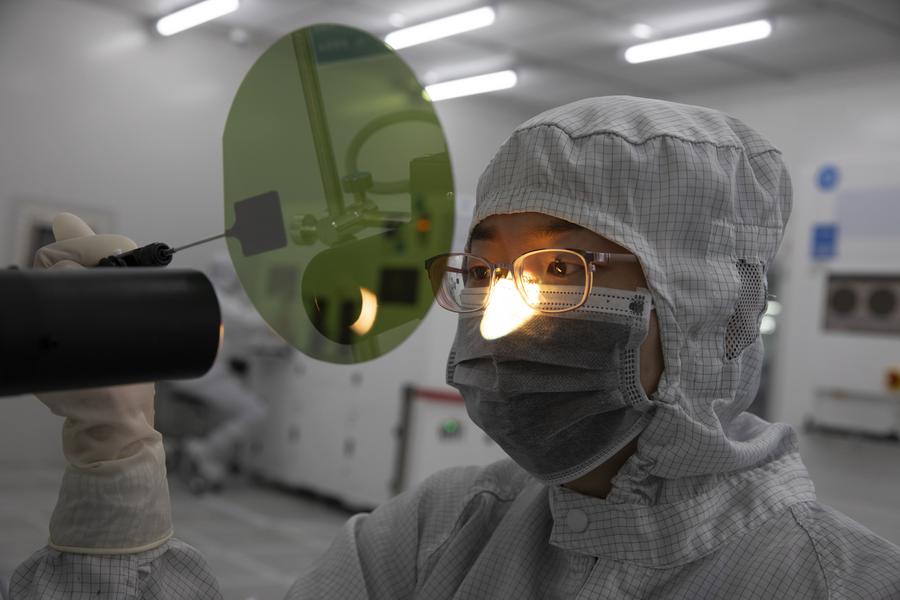How China Tackles the Tech Stranglehold

Given China’s modernization strategy is largely based on innovation in science and technology, sustained high R&D spending is essential to its success.
In 2023, China’s expenditure on research and development (R&D) reached nearly 3.34 trillion yuan ($472 billion), a year-on-year increase of 8.4 percent, according to a communiqué jointly released on October 2 by the National Bureau of Statistics (NBS), the Ministry of Science and Technology and the Ministry of Finance. This growth rate surpasses the target of over 7 percent annual growth in national R&D expenditure set for the 14th Five-Year Plan (2021-25) period, indicating the importance China places on R&D.
R&D expenditure comprises different costs associated with developing science and technology, usually funded by government bodies, enterprises, non-governmental organizations, and foundations.
China has consistently adhered to the principle that science and technology are primary productive forces, a driving concept that has fueled its economic and social development. With this principle in mind, China has steadily expanded the scale and growth rate of its R&D investment.
According to the NBS, the country’s total R&D expenditure exceeded 1 trillion yuan ($141 billion) in 2012, 2 trillion yuan in 2019, and 3 trillion yuan in 2022.
The continuous growth of China’s R&D expenditure plays an important role in advancing the country’s science and technology progress, driving economic and social development, and enhancing national competitiveness. This is especially important for addressing challenges in hi-tech fields, including the production of chips.
Although China is now a major manufacturing power, many core products still rely heavily on imports, including lithography machines and high-end chips. Chinese manufacturers continue to face technological hurdles in the R&D and production of these items. Moreover, in a bid to contain China’s development, the United States and several other Western countries have banned or restricted the exports of hi-tech products such as the aforementioned ones to China.

To change this situation, China must further increase its investment in science and technology, focusing on solving bottlenecks by increasing self-reliance in innovation. Expanding R&D expenditure will drive technological advancements and product innovation, improving product quality and performance, and enhancing market competitiveness. What’s more, it helps create better working environments for researchers, attract and nurture talent, and strengthen China’s research capacity.
Given China’s modernization strategy is largely based on innovation in science and technology, sustained high R&D spending is essential to its success.
From a practical perspective, the growth in R&D expenditure has provided the country with a strong foundation to accelerate self-reliance in the field of science and technology. This year, China made progress in manufacturing lithography machines, which are vital to semiconductor production, achieving breakthroughs with a model that operates at a wavelength of 193 nanometers (nm), a resolution below 65 nm and an overlay accuracy below 8 nm. These numbers reflect technological advancements in semiconductor manufacturing, particularly in the production of high-performance chips.
Businesses, government-affiliated research institutions and universities are the three primary drivers of R&D activities. In 2023, their respective R&D expenditures stood at 2.59 trillion yuan ($366 billion), 385.63 billion yuan ($54 billion) and 275.33 billion yuan ($39 billion), representing year-on-year increases of 8.6 percent, 1.1 percent and 14.1 percent. Businesses remain the dominant investors in R&D in China, accounting for 77.7 percent of the country’s total expenditure.
Globally, China ranks second in total R&D expenditure, trailing only the United States. However, in terms of R&D intensity—the ratio of R&D spending to GDP—China lags behind the U.S., Japan and some European countries, falling short of the standards required to become a global science and technology leader. In 2023, China’s R&D intensity stood at 2.65 percent, ranking 12th in the world, a figure that is misaligned with its status as the world’s second largest economy.
While China’s overall R&D spending continues to grow, its relatively low global ranking in R&D intensity indicates the need to lift investment effectiveness.
 Facebook
Facebook
 Twitter
Twitter
 Linkedin
Linkedin
 Google +
Google +










